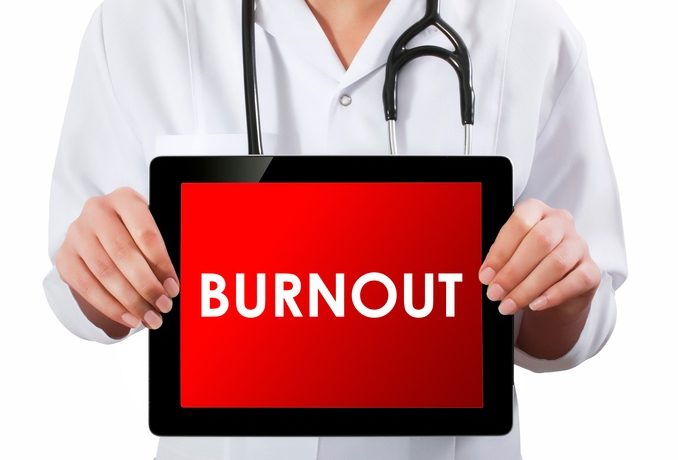Blog
Real Reasons that Doctors in New Hampshire are Happier Providers

Ask 15 doctors why they are happy practicing in New Hampshire and you’ll probably get 100 different answers.
Yes, there are a lot of reasons doctors in New Hampshire are happier providers. Some have to do with compensation, some with the overall quality of life–all are real for the state’s nearly 4,000 providers.
Here’s a look at the top 15 real reasons doctors in New Hampshire are happier:
1. Compensation. According to Medscape, physicians in New Hampshire enjoy high wages.
2. Patients who have insurance. Only 5 percent of the people living in New Hampshire are uninsured, according to the Henry J. Kaiser Family Foundation.
3. Quality of life. The Granite State offers the highest quality of life in the country, according to data compiled by Stay Work Play New Hampshire.
4. Community hospitals. They are large enough to provide interesting cases, small enough to allow you to actually get to know your patients.
5. Income tax. Simply put: there isn’t an income tax in New Hampshire.
6. Manchester! It’s big enough to offer plenty to do and claim the title of New Hampshire’s Business Capital, small enough so that it always feels like home–and only an hour drive from Boston.
7. A commitment to public health. According to Health.com, New Hampshire residents are more active than most other people in the country, don’t have a lot of infectious diseases and enjoy a low infant mortality rate. In other words, they are committed to public health.
8. The White Mountains. If you like to hike, ski or take in some of the most beautiful fall foliage in the country, you’re going to love escaping to the White Mountains in the Norther part of the state.
9. Dog sledding. Yes: dog sledding.
10. A community that cares. When you join the ranks of the doctors in New Hampshire, you are joining the ranks of community that truly cares for one another. And you never know who you might be working with to make New Hampshire better for everyone.
11. Public safety. New Hampshire is serious about its public safety. And according to U.S. News & World Report, it’s one of the three safest states in the entire country.
12. Innovation. New Hampshire community hospitals have been recognized among the “most wired” in the country by Hospitals & Health Networks.
13. Farmers markets. They are ubiquitous in New Hampshire, and farmers markets are the place to go for fresh fruits and vegetables, live music and incredibly delicious baked goods.
14. Opportunity. When U.S. News & World Report set out to rank all 50 states, it considered everything from health care to education to crime to opportunity–and New Hampshire topped the list for opportunity (and ranked second overall, by the way). If you have a dream, New Hampshire is the place to try to make it come true.
15. Quality health care. And speaking of U.S. News & World Report … the online publication also recognized New Hampshire for delivering high-quality health care (number four out of 50). You can be part of that greatness.
Yes, there are a lot of reasons doctors in New Hampshire are happier–from the compensation to the quality of life to quality of the fresh fruits and vegetables you’ll find at the farmers markets.
If you are looking for a career change, why not work where you are sure to be happy? Why not take your talents to New Hampshire?
![]()
How to Succeed in a Provider Job Search this Season

There are few careers more respected and fulfilling than one in the medical field. Whether you are a family doctor, a specialist, a physician’s assistant, a nurse practitioner or any of the wide variety of other jobs available in health care, you possess a skill set that is sought after by many. But how do you identify the medical facilities, organizations or practices that you want to work for or that may be searching for you? What should you know if you are currently engaged in a provider job search?
The first issue to be addressed is why you are conducting this provider job search. Are you currently unemployed or underemployed? Are you unhappy in your current position or simply testing the waters for the purposes of comparing wage and benefits for your next performance evaluation discussion about a wage increase? Perhaps you’re interested in advancement and find that your present employment situation prevents you from doing so.
Your answer to the above has the potential to impact your job search in several ways, not the least of which is how open you can be about that search. The less you want your current employer to know you are seeking a change, the more discretion you will need to exercise. Unfortunate as it may be, you should think carefully before you share your plans with any of your coworkers. The less others know, the less chance of someone accidentally publicizing your decision before you are ready to announce it yourself.
Once you have determined the purpose of your provider job search, the following steps will enhance your effort:
1. Review and revise your CV.
As the saying goes, you do not get a second chance to make a first impression. Because your CV serves as that first impression during your provider job search, you must be absolutely certain that it is up-to-date, well-formatted and 100% error free. Have it reviewed by a medical professional you trust, preferably one involved in hiring.
2. Confirm your references and their contact information.
Ensure that those who have previously agreed to vouch you will continue to do so and that they are where you think they are. A resume with outdated references will be seen as a sign of a lazy or disorganized mind.
3. Network. Network. Network.
Even if you hate the thought of networking, connecting with those in your contacts list is essential. People in an individual’s personal and professional circles can become the source of leads, referrals and other information relevant to a provider job search.
4. Research your targets.
Once you have identified the direction in which you want to take your search, do some due diligence not only on prospective employers but also on their locale. Check with your network to see if anyone you know knows someone at the prospective employer. Conduct an online search of the employer, its place in the area of specialty, if any, and how it fits into the community in which it is located. As well, find out all you can about the organization’s key personnel including, if at all possible, the person tasked with hiring for the position you are seeking.
5. Don’t procrastinate.
Don’t put off updating your CV, solidifying your network, or doing whatever other legwork is necessary to carry out an effective provider job search. You won’t know whether what you did is too late until it is.
—
Are you ready to apply for a new provider career? Consider Elliot Health System.
![]()
Why Physician Relocation to New Hampshire is Worth the Trip

New Hampshire is 266 miles from New York City. You can catch a nonstop flight at Chicago’s O’Hare International Airport and arrive in the Granite State just about two hours later. Making it to Manchester, New Hampshire, from the West Coast (or Europe) will takes just about half a day in a jet.
But regardless of where your journey begins, one thing is for sure: It’s worth taking a trip to New Hampshire if you’re considering physician relocation.
There are a lot of states across the United States that are suffering from physician shortages. So they’re rolling out the red carpet, putting their best feet forward and working hard to recruit doctors.
But when it comes to relocating for your medical career, no other area of the country can compete with New Hampshire.
Here’s a look at why taking the time to explore New Hampshire is worth the trip–no matter how far you have to travel:
For your finances
Medscape, the venerable online news-gathering organization focused on delivering the most accurate information possible to physicians, publishes an annual list of the best places to practice.
Last year, only one Northeastern state made the cut in terms of physician compensation: New Hampshire.
Medscape pointed out that the average compensation for doctors in the Granite State was $322,000, second in the entire country (behind North Dakota). New Hampshire also has the second-lowest cost of living, the lowest physician density in New England, no income tax and no sales tax.
Add it all up, and physician relocation to New Hampshire makes a lot of sense for your finances.
For your family
Of course finances are only one factor when it comes to choosing a new place to practice. All the money in the world won’t do you any good if your family isn’t safe, well-educated and comfortable.
That’s another reason why New Hampshire is worth the trip.
Stay Work Play is an organization with an agenda. It wants to encourage people to “stay in, come to, or boomerang back to New Hampshire.”
And there’s a good reason to consider their sales pitch: The quality of life in New Hampshire is among the best in the entire country.
According to Stay Work Play, the state consistently ranks in the top three when eight different national quality of life rankings are compiled and considered.
The criteria include high school graduation rates, family well-being, tax climate, health, livability and per capita income.
These are all things that make moving to New Hampshire well worth the trip.
For every physician
New Hampshire’s motto is “live free or die,” and the people who live, work and play in the state take it quite seriously.
The state does things a little differently than most others in the country–and that’s a good thing for physicians.
There is an innovative spirit that is part of the rich and creative tapestry of a state that touches the sea, stretches to the Canadian border, is full of forests, thriving cities, manufacturing, Fortune 500 companies and some of the most forward-thinking healthcare professionals in the world.
The way that New Hampshire embraces innovation is just one of the reasons relocating to New Hampshire makes sense.
It’s a place where anything is possible for physicians. It’s a place where hospitals and healthcare systems embrace technology, connect with their communities and receive national recognition for the way they care for patients and do business.
Whether you’re in the East, Midwest, West overseas, take the time to take a look at New Hampshire.
—
Ready to apply for a physician career in New Hampshire? Consider Elliot Health System.
![]()
10 Reasons Living Better is Easier in New Hampshire
 “Walkin’ barefoot in your sands, or a clear blue mountain stream, leaves my troubles far away or at least that’s how it seems.”
“Walkin’ barefoot in your sands, or a clear blue mountain stream, leaves my troubles far away or at least that’s how it seems.”
These lyrics from the Brownie McIntosh-penned “Oh, New Hampshire (you’re my home)” capture the essence of why living better is easier in the Granite State.
While most people know that New Hampshire is home of the first primary of each U.S. presidential election cycle and that its motto is “live free or die.” But, the state truly offers something for everyone–from outdoor enthusiasts to foodies to healthcare professionals.
Here’s a look at 10 reasons why living better is easier in New Hampshire:
1. Keeping more of your hard-earned money
If there is one thing people in New Hampshire value, it’s hard work (and the fruits of their labor). There are only nine states in the country that do not collect income tax–and the Granite State is one of them. It’s also one of five states without a statewide sales tax.
2. Quality health care
When it comes to health care, New Hampshire consistently ranks among the best states in the country. U.S. News & World Report puts the Granite State at number 2. Bankrate puts it at number 4.
3. It’s a great place for kids
Each year, Kids Count evaluates how well children live in each of the country’s states based on economic well-being, education, health, and family and community. Each year New Hampshire ranks at or near the top. Yes, New Hampshire is a great place for kids.
4. The great outdoors
If you like to hunt, fish, hike, bike, ski or swim, you are sure to find a place to do it in New Hampshire. It’s got mountains, forests, lakes, streams and the ocean all within driving distance. How many other states can make the same claim?
5. Big cities and small towns
New Hampshire is home to both big cities and bucolic little towns. This gives you the opportunity to enjoy the best of both worlds–from world-class entertainment and nightlife to quiet tranquility.
6. Safety
If you’re looking for a state where you can feel safe walking down the street or playing with your kids in a park (and who isn’t?), you’ve found a safe haven in New Hampshire. It consistently ranks among the safest states in America, with low violent and property crime rates and communities of people that truly look out for one another.
7. Four seasons of fun
From sensational spring wildflower blooms to summers that aren’t sweltering to fantastic fall foliage to winters washed in wonderful white snow, New Hampshire delivers four seasons of fun. The weather doesn’t ever seem to get too extreme, and you and your family won’t likely ever experience a hurricane, earthquake or tornado.
8. Cost of living
There is a direct correlation between living better and low costs of living. Manchester, which is New Hampshire’s largest city, is one of the most inexpensive cities in the country in which to live, according to Forbes.
9. The food
If you’re a foodie, you’re going to love the offerings in New Hampshire. With is proximity to the ocean, seafood is plentiful. And if it’s comfort food you seek, you are sure to enjoy the traditional meals of the New England’s Puritan settlers, which include baked beans, baked turkey and apple pie. The state is also home to Black Trumpet, which is regarded as one of the top restaurants in New England.
10. Overall quality of life
When you add it all up–the economics, adventure, healthcare, safety and more–you have the highest quality of life in the country.
—
One of the best aspects of New Hampshire is the variety of outdoor adventures it provides. Download our free guide to start planning your next weekend excursion.
![]()
Top Ways that a Community Hospital Innovates
Increasing financial pressures. Patient safety. Government mandates. Personnel shortages. Patient satisfaction.
These are the most vexing challenges facing hospitals today, according to the American College of Healthcare Executives. They are challenges that are omnipresent, staring administrators and physicians squarely in the eyes, daring them to find a better way, to innovate.
And it’s likely that the road to responding to the challenges will wind its way through America’s community hospitals.
While most people associate innovation with large healthcare systems, research universities and med-tech companies, many important advances in hospital care and the business of health care actually stem from work conducted at community hospitals.
Here is a look at some of the ways a community hospital can not only keep up with the rapid pace of innovation, but actually be a leader.
Addressing financial pressures
It’s no secret that the healthcare industry is facing immense financial challenges. The adequacy and timeliness of Medicaid reimbursements, the inability of patients to pay, rising costs associated with staff and operations, and the overuse of emergency department services affects hospitals large and small.
And while a community hospital might not have all of the resources of a larger healthcare system, what they do possess is nimbleness.
Physicians working in a community hospital typically deal with less bureaucracy, which means they have more license to develop innovative solutions to financial challenges.
For example, they can create hybrid models of multiple service lines and programs that meet their patients needs more efficiently and reduce overhead costs.
Addressing patient safety issues
As the Agency for Healthcare Research and Quality (AHRQ) pointed out in its report on patient safety, to err is human–and many chronic patient safety concerns are caused by human error.
According to the AHRQ, communication (or a lack thereof) is the root cause of many quality and safety issues in hospitals. This is especially true at large hospitals that deal with large daily censuses.
But at a community hospital, where physicians, nurses, nurse practitioners and other staff are more likely to know one another well and work closely together, communication tends to be less of a problem.
It may not sound all that earth shattering, but community hospitals are on the forefront of making communication a priority by breaking down silos and putting patient safety first. Of the 100 hospitals in the country to be recognized as the best by Truven Health Analytics in 2016, 60 are community hospitals–and all were recognized for their commitment to building a culture of open communication and prioritizing patient safety.
Addressing the staffing challenges
The healthcare industry is in the midst of a staffing crisis–and it’s affecting the large healthcare system and community hospital alike.
According to the American Nurses Association, there is a significant shortage of nurses (and it’s not likely to go away any time soon). There’s also a shortage of physicians, according to the Association of American Medical Colleges.
Being innovative in recruiting qualified healthcare professionals is nothing new for community hospitals which are often located in smaller communities.
For years, they’ve been offering healthcare professionals career opportunities that are not likely to be had at large healthcare systems:
- Opportunities to use expanded functions
- Opportunities to treat a broader range of cases
- Leadership opportunities
- Lower costs of living
- Fewer quotas
- Stronger connections with patients.
These are just some of the benefits healthcare professionals reap from community hospitals.
—
Elliot Health System is proud to be an innovative community hospital. Join us!
![]()
The Best Apps for Physicians Who Want to Avoid Burnout

It used to be a problem hidden in the shadows of the deepest corners of hospitals, clinics and physicians’ minds.
Few ever spoke about it, even though nearly everyone knew it existed.
But that all changed in December 2015 when the Mayo Clinic released a study that shined a light so bright directly into the eyes of the issue that the healthcare industry finally had to admit that physician burnout was an insidious and serious problem that could no longer be ignored.
The mainstream and industry media covered the story by sharing personal stories of physician burnout that were as gut-wrenching as they were concerning. Tips and tricks for avoiding burnout became ubiquitous on the internet and at professional conferences. Government agencies addressed the issue.
Then the tech industry got involved.
As with most things in modern life, the big brains in Silicon Valley brought fresh perspectives to a pervasive problem–and delivered solutions that are as practical as they are wise.
And yes, the solutions came in the form of apps.
Some of the best apps for physicians facing burnout aim to lower stress. Others try to help you achieve better work-life balance. A few exist to focus your attention on your practice. Some are just silly fun.
All can be effective if you give them a chance.
Here’s a look at the three best apps for physicians who want to avoid burnout:
1) Insight Timer
By now, most physicians have heard about meditation as medicine, and most probably agree that it can play an important role in helping relieve stress.
But accepting meditation’s efficacy and finding the time to meditate are two entirely different things.
That’s why Insight Timer exists.
With the swipe of your smartphone, the app provides you with instant access to guided meditation sessions of any length. It allows you to connect with other physicians from around the world who appreciate the power of meditation. And Insight Timer lets you write record notes after every session so the thoughts and ideas that come from the clarity that meditation delivers will never be forgotten.
Learn more about Insight Timer and download the app.
2. Lift
Work-life balance isn’t something that is easily achieved, especially for physicians who are constantly pulled in different directions all day long.
In the tug-of-war between what must be done and what you want to be done, the mandatory almost always overpowers the optional.
But Lift is an app that helps you identify and make time for those life activities which you would like to do but often get pushed aside to make room for work–things such as exercising, yoga, writing, meditating, spending time with your family and spending time alone.
You enter the activities and your schedule, Lift provides you with gentle reminders and positive reinforcement to encourage you to carve out time for yourself. It also tracks your progress, so you’ll always be able to see how balanced your life truly is.
Learn more about why Lift is one of the best apps for physicians.
3. Burnout Proof
If you are struggling with burnout, an app created by people who run a website called “The Happy MD” might seem like salt in the wound.
But take a little time to explore the Burnout Proof mobile app and you’re likely to find something useful.
It includes more than a dozen videos, tons of tips, plenty of proven tools and guided audio designed to help you relax, focus and find that work-life balance that is often hiding somewhere in the shadows of your mind.
Learn more and download the Burnout Proof app today.
—
Did you enjoy this article? Subscribe to read more like it!
![]()
Apps for Physicians Who Need More Time in the Day

“There just isn’t enough time in the day” is a refrain familiar to us all. And it often feels that way. The truth is, we have all the time there is. What we do with it is up to us. For doctors, as the popular saying goes, “the struggle is real.” Effective time management is essential to leading a professional life that is orderly and productive while leaving time for a high quality of life. Fortunately, there are apps for physicians that help you manage your daily life as efficiently as possible.
The following list is not exhaustive nor is it meant to reflect our rating of available apps. We are simply including some apps for physicians we think might be valuable additions to your time management toolbox. Some of these are free; we will identify those that are not.
Doximity: (iPhone/iPad and Android via Google Play Store)
This app provides access to HIPAA-secure communication, efax, custom-curated career management and medical news. All HIPAA communication is encryption secured. Communicate with colleagues, get the most current medical news and journal articles, search other career opportunities, and establish a secure fax-line.
Medscape by WebMD: (iPhone/iPad/iPod Touch and Android)
This app serves as a clearinghouse for all information related to prescriptions as well as drug safety. Procedure videos are available, as is a medical calculator and online access to materials for Continuing Medical Education (CME).
Epocrates: (Available on iTunes for Apple devices and Google Play for Android – There is an annual subscription fee for Epocrates Essentials of $159.99)
The company claims that 1 of every 2 physicians uses this app which might suggest you should do so if you’re not among that group already. The app itself possesses multiple features such as:
- Drug prescription and safety info
- Information regarding potential harmful interaction between/among meds
- Up-to-date medical news/research
- HIPAA-compliant text messaging
Family Practice Management: (Apple and Android devices – Basic app free, individual issue subscriptions available)
Published by the American Academy of Family Physicians (AAFP), this is one of the more popular practice apps for physicians. Designed for physicians, care administrators, office staff and other health care professionals, the journal provides assistance ranging from improving the quality of care and enhancing payment to managing technology and, perhaps most relevant to you personally, achieving better life balance.
As with some other
apps for physicians, the FPM provides news and content in real time. A complete subscription is available for $69.99 per year. The annual subscription for a single issue is $29.00.
PEPID: (Android and Apple devices)
This is how the company describes itself on its website:
“For more than 20 years, PEPID has provided exclusive web-based point-of-care solutions that enable healthcare professionals to efficiently pinpoint diagnoses, treat diseases and medical conditions, detect harmful drug interactions and allergy sensitivities, accurately dose patients, and provide quality patient education. PEPID’s products are integrated within the systems of clinics, hospitals, universities and schools around the world.”
One of the tools available from PEPID is what they call the ICD-10 Lookup Tool. Providing coding support that incorporates all information the World Health Organization publishes, this is one of the few apps for physicians that minimizes the time and effort necessary to find information when updating patient records or working with an insurance carrier to coordinate payment.
MedWeb LIVE:
(Android, iPad)
This is one of the apps that was designed to enable physicians to collaborate across multiple PC/mobile device platforms. Providing secure video communication, it permits:
- Specialty consultation
- Clinical collaboration
- On-call telemedicine
- Primary care telemedicine
- Prehospital telemedicine
- Educational presentations
Needless to say, the time-saving opportunities are extensive.
—
Do you want to read more articles like this one? Subscribe!
![]()
2017’s 5 Top Physician Blogs

It has been said that a person alive in the 1700’s processed as much information in a lifetime as the New York Times publishes in one Sunday Edition. One. If we stop to consider how much information we are exposed to daily, that shouldn’t really shock us all that much.
With the wealth of information available, it is difficult to sort through it all and separate the important from the merely interesting. Physicians (and health care providers in general) have a constant need to stay abreast of the latest information related to their areas of practice. This is where physician blogs can come in very handy.
For our purposes, we will not include any publications that are primarily policy or politically driven. As well, we do not intend for you to consider this an exhaustive list; in fact, inclusion or omission of any blogs with which you may be familiar is no reflection of our opinion about them. We are simply trying to introduce 5 of the best physician blogs in hopes of providing you with additional tools to help you achieve greater professional success and/or sense of personal fulfillment.
mommd.com – Connecting women in medicine
Clearly targeting a specific demographic, this site caters to women in medicine with blogs “which cover such topics as health, medical school applications, pediatrician moms, physician success, childcare and many other thoughts for women in medicine.” Don’t let the blog name fool you into thinking it just addresses “staying fit while practicing” type of fluff, however. For instance, a title of a recent blog post was: How to Detect and Address the Early Signs of Alcoholism in Your Patients.
Physicians Practice – Your Practice Your Way
The website is a clearinghouse of information for medical professionals with resources for CME, conferences, employment, patient confidentiality and salary survey results, among other things. It is also a great source of physician blogs. Recent titles posted on the site include: Keeping Medical Staff Happy (David J. Norris, MD), In Medicine, Honest is the Best Policy (Jennifer Frank, MD) and Collecting from Payers and Patients is Draining (Leann DiMomenico McAllister).
Freelance MD – The cure for the common physician
Freelance MD promotes itself as a community of physicians that give you more control of your career, income, and lifestyle. And it’s free! Although not updated as frequently as other physician blogs, it maintains a fairly extensive archive of content on a multitude of issues.
KevinMD.com – Social media’s leading physician voice
KevinMD.com describes the website as follows: “KevinMD.com shares the stories and insight of the many who intersect with our health care system, but are rarely heard from.” Thousands of authors contribute to KevinMD.com: front-line primary care doctors, surgeons, specialist physicians, nurses, medical students, policy experts. And of course, patients, who need the medical profession to hear their voices.
More trendy than most physician blogs, the popularity of KevinMD.com remains very high.
33 Charts – Exploring the edges of medicine and technology
This rather eclectic blog site identifies itself as: “a mashup of curated and original stuff that crosses the spaces of digital health, media, communication, technology, patient experience, digital culture, and the humanities.”
The scope of its content is evident in some of the recent posts: Medicines Exponential Future and Past and Disclosure, Doctors and Social Media.
There are, of course, dozens and dozens of physician blogs and one can spend hours researching them. Try the ones above for starters. They should provide you with a solid foundation of information and some interesting stories as well.
—
Did you enjoy this article? Subscribe to read more like it.
![]()
10 Ways to Form a Lifelong Patient Care Partnership

Like any relationship, the patient care partnership is founded on communication. At base, as explained on Nursetogether.com, senders communicate messages to receivers, but clinicians are often under intense stress that weakens relationships. The following pointers can help overcome that stress and ensure high-quality care through strong partnerships.
1. Focus on Patients
As shown on the Health Affairs Blog, patient-centered care works to improve outcomes and satisfaction through strong patient care partnerships. Therefore, health care team members use clear and empathetic communication to provide support across various settings. In the process, they work to equip patients with the skills to prevent and manage illness on their own.
2. Center Relationships
Impersonal institutional culture can lead practitioners to ignore patient care partnerships. However, Goold and Lipkin noted that it is key to managing data, diagnoses, plans, and compliance. So, center relationships and increase patient comfort by getting to know them, their families, and their interests.
3. Set the Agenda
As Henbest and Stewart shows, centering patients orients healthcare around their specific concerns. In particular, practitioners should start by having patients list their issues and then collaborate on an agenda from most to least important. At that point, the two of you can create a plan of action together.
4. Listen Carefully
Reflective listening builds on the directed attention of active listening. Care providers specifically listen without interrupting and then reflect patients’ concerns back to them. Allowing people to tell their story will help you obtain information and, as shown by Clark et al. improve outcomes, behavior, and patient satisfaction.
5. Be Mindful
Communication’s increasing complexity can put heavy demands on providers’ attention, making it difficult to be conscientious in one’s work. On the other hand, mindfulness – or being fully present in one’s practice – can prevent errors and relieve stress for patients and practitioners, as Hutchinson and Dobkin demonstrate in their research.
6. Manage Emotions
Managing emotions is one of the most valuable communication skills when dealing with the difficult situations of modern healthcare. Kim et al. highlight empathy’s role in boosting trust, compliance, and satisfaction. Team members should thus identify, acknowledge, and respectfully address emotions.
7. Educate
For help in decision-making, patients require an understanding of treatments, consequences, and steps in healing. You should provide websites, reading materials, videos, and other resources to help patients learn more. As shown on the Health Affairs Blog, education generally reduces re-admission while raising moral support and mental stability.
8. Increase Access
Information technology provides one way to minimize wait times and otherwise boost health care efficiency. For instance, electronic health records give patients greater access to their health goals, needs, values, and preferences. As noted on Medscape, such technology challenges the physician’s traditional role and nurtures the patient care partnership.
9. Improve Facilities
Greene et al noted that medical facilities should be improved. From medical jargon used in signs to nurses’ stations that are situated oddly far from patients, these buildings are fundamentally designed around clinicians’ needs alone. Centering such spaces around patients can help create more empathetic environments that help patients feel involved in their health care.
10. Get Feedback
Providing and receiving feedback are reassuring activities, as shown in a study from Perspectives on Medical Education. Many clinicians survey patients and use the results to improve their communication and behavior. Such surveys also help patients trust their providers and feel more involved in their health.
With consistent practice, these tips can strengthen a patient care partnership – and improve care quality, safety, and efficiency. In the process, both sides of this partnership will better endure – and to improve the conditions of modern medicine.
—
Did you like reading this article? Subscribe!
![]()
3 of the Best Social Media Tips for Medical Students

Social media provides ever-more essential opportunities for promoting health care. From blogging to tweeting, networking, and everything in between, medical professionals can not only reach out to current and potential patients, but can also define their online reputation. Yet, it is important to follow guidelines like those provided by the American Medical Student Association because social media can also be a minefield of potential conflicts. The three points below are some of the best social media tips, each of which shows how medical students in particular can protect themselves and their future careers through careful, professional, and ethical behavior online.
Practice Professionalism
As a representative of the medical profession, you should maintain ethical conduct while using Facebook, Twitter, and related media. Take the time to consider the short and long-term consequences of your actions, especially in terms of potential impacts or viral spread. You should specifically assess whether you would say the words in your posts aloud in front of your boss or professors. Since around half of all employers in the field will review your social media profiles, according to the Journal of Graduate Medical Education, your reputation is on the line. Accordingly, be honest about your certifications, provide disclaimers about your position as a student, and avoid political advocacy. If you feel obligated for the latter, then speak with a university representative about potential complications.
Stay Separated
Another one of the best social media tips for medical students is to maintain separation between your different lives. Your social media profile is much more public than your everyday life, but few US medical schools have clear policies about appropriate conduct online, as noted by Kind et al. You should keep your presence online as a student separate from your personal profiles to prevent any potentially disrespectful, defamatory, vulgar, libelous, or inflammatory words or images. As a representative of the medical field, you must respect all people, no matter their age, ethnicity, gender, orientation, characterization, or marital or military status. At the same time, you should avoid requests for medical advice and minimize all interaction with patients past or present. Perhaps most importantly, be sure to read the Terms of Use and Privacy Policy as it continuously evolves to ensure that you maximize your security and privacy.
Post Carefully
Similarly, and perhaps most importantly, never discuss confidential information online. Remember to follow the standards of patient privacy and confidentiality as laid out in the Health Insurance Portability and Accountability Act (HIPAA) and Family Educational Rights and Privacy Act (FERPA). As Kevin Pho, MD, founder of KevinMD.com points out, you should be especially sure to protect patient privacy and avoid discussing specific cases. Otherwise, should any patient recognize themself in your online posts, there will be legal and professional ramifications. This last social media tip also covers the restrictions of specific social networking sites, apps, and blogs. It is important to be aware of copyright laws surrounding questions of the right to use content, from photographs to videos and much more besides.
Following the tips above will help ensure that you get your career off to a solid start – by avoiding potential controversies. Although social media feels fun, it has the potential to both help you reach out to the broader public and alienate you from them. Remember that your posts live forever, so any rants and raves you post today will still be around when you’re searching for a job. Potential employers will search your digital pasts, so make sure that you maintain a respectful, professional, and ethical online presence.
—
Did you enjoy this post? Consider subscribing!
![]()
















Recent Comments